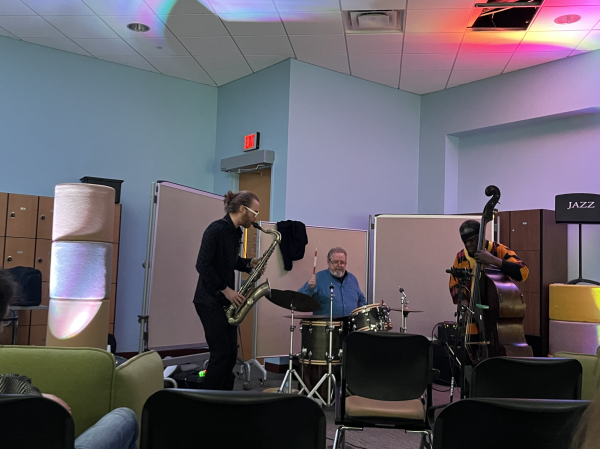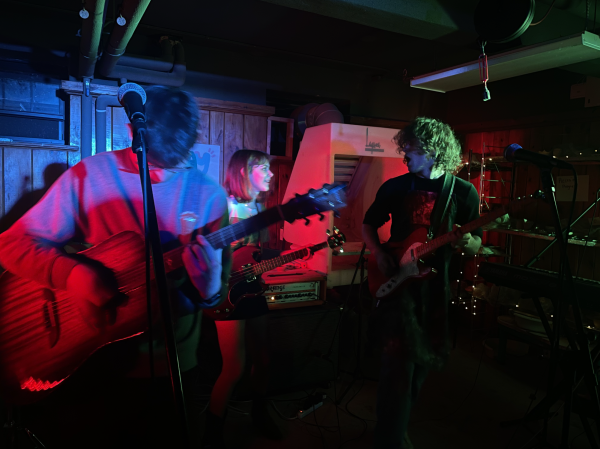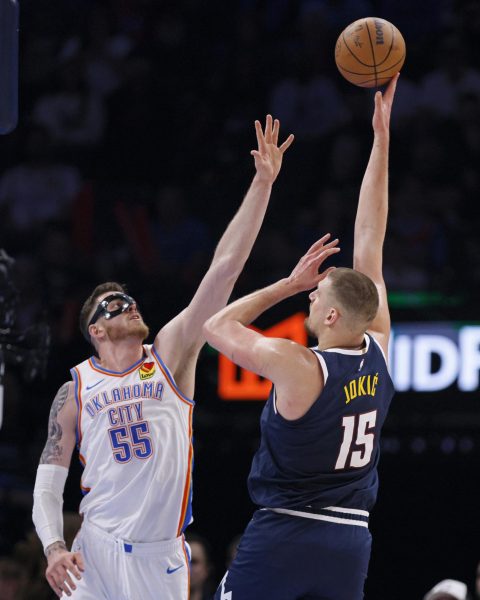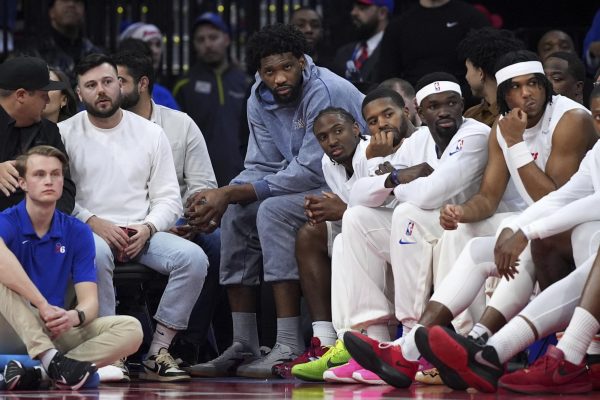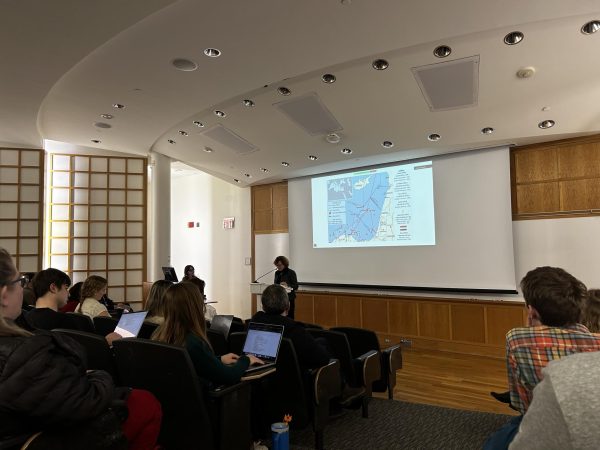First Alternative Film Screening
On the evening of Jan. 24, students and staff gathered in Little Hall’s Golden Auditorium for the first Alternative Film Screening of the calendar year. The event featured seven curated films from the “Cinema’s First Nasty Women” collection of 99 European and American silent films produced from 1898 to 1926. They were sourced from 13 international film archives and libraries, featuring cinematic themes of feminism, slapstick comedy and experimentation of cross-dressing.
All films were in an analog style, characterized by the black and white textured aesthetic of filmmaking in the early 20th century. They had a strong focus on female pioneers in comedic film, breaking the boundaries of gender norms and presentation, according to junior Chris Mardirosian.
“One of the best parts of the screening was its ability to highlight the representation of women in cinema and in comedy in particular,” he said. “I thought that each film beautifully articulated the need to think critically about gender.”
The following films were shown in the order they are presented here:
- Mary Jane’s Mishap (UK 1903), with Laura Bayley.
- Rosalie and her phonograph [Rosalie and Her Phonograph] (France 1911), with Sarah Duhamel.
- Fear of Shadows (France 1911), with Léontine.
- Zoe and the Miraculous Umbrella [Zoe and the Miraculous Umbrella] (France 1913), with Little Chrysia
- The Death Mask (US 1914), with Tsuru Aoki. (AKA The redskin duel)
- The Nursemaids’ Strike (France 1907).
- What’s the World Coming To? (US 1926), with Katherine Grant and Laura de Cardi.
Films ranged temporally from 1903 to 1926, and were from the UK, France and the United States. Most films were slapstick, a style of comedy characteristic of the time which uses exaggerated physical satire with a focus on the absurd. The comedy often is centered on foolish clumsiness, violence and mishap. Because the films are without dialogue, physical comedy is the most available medium of the silent films of this time.
For example, in the first film shown, “Mary Jane’s Mishap,” Mary Jane pours paraffin in her stove to light a fire and is blown out of her chimney in a dramatic explosion, her hair and dress in chaos. She then comes back as a ghost over her grave at the end of the film, finds her paraffin can, and returns to her final resting place.
In the fourth film shown, the French “Zoe and the Miraculous Umbrella,” Zoe has an umbrella that can make an object she sees in front of her rain down from the sky. She uses this to her advantage by raining down the signature hat of a woman in town she’s jealous of, brooms onto a man who harasses her while sweeping and ladders onto a man whose ladder broke. The film ends with her trying to help a farmer by making it rain, in which the actors are caught in a ridiculously torrential downpour, destroying Zoe’s magic umbrella.
The final film shown, “What’s the World Coming To?,” is set hundreds of years into the future where, as the title sequence of the film read, “women are more like men and men are more like women.” The film chronicles the marriage between a man who acts as a stereotypical hyper-feminine housewife, and a woman who is portrayed as a masculine working husband.
As senior Rivka Dai explained,“the last film [was] my favorite because it demonstrates both gender queerness and humor simultaneously. The film uses humor to ridicule gender norms, which was very brave for that time. Additionally, the texture of analog film added to its emphasis.”
The films were snappy and entertaining, accompanied by syncopated boppy music scores. The crackle of the analog film transported the viewer to a different time. But perhaps most importantly, the screening provided a powerful show of the pioneering work of female comedians in films of the early 1900s on an international stage.
“Although it was made decades ago, I resonated and connected with the characters who live very different yet similar lives to others today. I saw a glimpse into what the world was like for my great grandmother growing up and felt grateful for all the women who came before me and all the change they made,” junior Carly Kleinberg remarked.
If you are interested in alternative cinema events in the film and media studies program, upcoming events are featured on the “Screenings and Programs” page of the Colgate University website.


